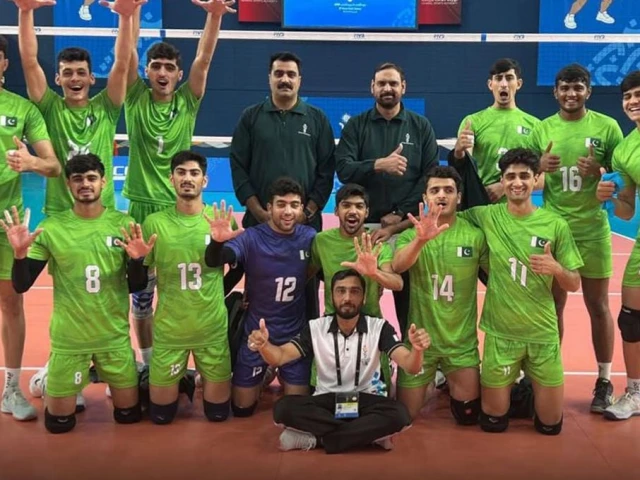- Space debris: How dead satellites could be poisoning our atmosphere Aerospace Global News
- Video Explores The Weirdest (and Most Dangerous) Junk Orbiting Earth GeekTyrant
- Satellites and space trash threaten ozone layer and space safety Phys.org
Author: admin
-
Space debris: How dead satellites could be poisoning our atmosphere – Aerospace Global News
-
Just a moment…
Just a moment… This request seems a bit unusual, so we need to confirm that you’re human. Please press and hold the button until it turns completely green. Thank you for your cooperation!
Continue Reading
-
African Export-Import Bank (Afreximbank) Celebrates Outgoing President and Chairman
The Farewell conference, attended by more than 2,000 guests, attracted heads of state, former heads of state, other government leaders and representatives from across Africa and the Caribbean, top African business leaders, all former Afreximbank Presidents, Afreximbank President designate, members of the Bank’s Board of Directors, shareholders, serving and former staff members, friends and family of Prof. Oramah and Afreximbank as well as a host of other dignitaries.
In a farewell address, Prof. Oramah stated: “Our philosophy was borne out of the conviction that the only viable path forward for Africa’s development and economic emancipation was one that would aggressively reverse-engineer the colonial strategy of ‘divide-and-rule’ and ‘divide-and-conquer’ that had, for decades, pinned Africa and people of African descent down in the dustbin of despair and desperation.”
“Accordingly, our philosophy was that Africa’s development dynamo must be powered from within, as hundreds of years of history, had shown us that external interests had been mostly predatory and parasitic, unless engaged from a position of strength and purpose,” he explained.
Prof. Oramah added that, because Afreximbank fought on all fronts, “we can point to tangible differences the Bank has made; we can now point to those things that now exist, those new institutional arrangements and interventions that have now joined as formidable forces in Africa’s armoury in its fight towards true self-determination – those things that we look up to today, many of which were mere hopes and aspirations, 10 years ago”.
Earlier, Dr. George Elombi, President Designate of Afreximbank, described Prof. Oramah as “one of the few in the world, the 0.8 per cent, who combines vision and execution”, saying that, under his leadership, Afreximbank and its willing partners built a solid foundation for enhancing intra-African trade and industrial development.
“Instruments were created to dismantle the obstacles that have hindered Africa’s progress for nearly seven decades since Africa’s independence. He confronted the challenges of Africa’s industrial underdevelopment head-on, building on the work of those who came before him,” said Dr. Elombi.
He noted that Afreximbank was now one of the key multilateral financial institutions leading Africa’s development efforts, particularly in implementing the African Continental Free Trade Agreement (AfCFTA) and transforming the continent’s industrial landscape, adding, “Oramah has turned decades and centuries-old political wishes into tangible gains for all Africans.”
Prof. Oramah’s 10-year tenure, which began in September 2015, saw Afreximbank’s balance sheet and guarantees grow almost eight-fold, from US$6 billion when he took office to almost US$44 billion as at September 2025. It also saw the introduction and implementation of far-reaching products, programmes and initiatives specifically designed to address the challenges facing Africa’s trade and economic growth, helping to cement Afreximbank’s place as Africa’s foremost trade finance institution.
During his time, Afreximbank’s support played a significant role in putting the implementation of the AfCFTA ahead of schedule. The Pan-African Payment and Settlement System (PAPSS), which it has backed with a US$3 billion clearing and settlement facility, has become operational in 20 countries and has made it possible for African countries to trade across borders in their own local currencies.
The AfCFTA Adjustment Funds, supported by Afreximbank with a US$1 billion commitment and a partnership with the AfCFTA Secretariat, is enabling AFCFTA participating states to adjust in an orderly manner to the new trading regime.
The biennial Intra-African Trade Fair, introduced by Afreximbank in 2018, is tackling the challenge of limited access to trade and investment information across Africa and has, in its four editions, attracted over US$170 billion in trade and investment deals and 180,000 visitors. Moreover, the Bank’s digital platform, the Africa Trade Gateway, is using digital technology to break down information barriers, while the Afreximbank Africa Trade Centres, which have sprung up across the continent, are providing solid platforms for intra-African trade and investment information.
In the area of standards, through the Bank’s testing and certification centres, about 500 standards for pharmaceuticals and medical equipment, agriculture, automobiles, textiles, etc. have been harmonised, enabling smoother intra-African trade as the Bank continues to build more centres across Africa to ensure that there is infrastructure to implement the standards it has helped to harmonise.
Working with the AFCFTA Secretariat and COMESA, Afreximbank launched the African Collaborative Transit Guarantee Scheme, supported by US$1 billion in guarantee limits, which addresses the transit barriers to the movement of goods across borders.
In addition, Afreximbank is supporting the development of industrial parks and special economic zones across Africa, creating exports where none existed, including the emergence of heavy industries, such as the Dangote Refinery and Petrochemical plant in Nigeria.
Also, importantly, the Bank’s work has ignited socio-cultural and economic ties between Africa and the CARICOM and the broader African diaspora and its execution of African Medical Centre of Excellence projects has paved the way for quality healthcare to become accessible to many Africans.
Other significant accomplishments include the Bank’s COVID-19 intervention when it disbursed over US$10 billion to enable Africa to fend for itself during the COVID-19 Pandemic. The Bank also put up US$2 billion that enabled Africa and the Caribbean to procure COVID-19 vaccines.
Additionally, under President Oramah, Afreximbank recently launched the African Trade and Distribution Company (ATDC), an institution designed to tackle logistical hurdles in cross-border trade within the continent.
The legacy conference also featured tributes delivered by Afreximbank staff, members of the business community, political leaders, friends and other people from various walks of life who were impacted by the work of Prof. Oramah.
ENDS
About Afreximbank
African Export-Import Bank (Afreximbank) is a Pan-African multilateral financial institution mandated to finance and promote intra- and extra-African trade. For over 30 years, the Bank has been deploying innovative structures to deliver financing solutions that support the transformation of the structure of Africa’s trade, accelerating industrialisation and intra-regional trade, thereby boosting economic expansion in Africa. A stalwart supporter of the African Continental Free Trade Agreement (AfCFTA), Afreximbank has launched a Pan-African Payment and Settlement System (PAPSS) that was adopted by the African Union (AU) as the payment and settlement platform to underpin the implementation of the AfCFTA. Working with the AfCFTA Secretariat and the AU, the Bank has set up a US$10 billion Adjustment Fund to support countries effectively participating in the AfCFTA. At the end of December 2024, Afreximbank’s total assets and contingencies stood at over US$40.1 billion, and its shareholder funds amounted to US$7.2 billion. Afreximbank has investment grade ratings assigned by GCR (international scale) (A), Moody’s (Baa2), China Chengxin International Credit Rating Co., Ltd (CCXI) (AAA), Japan Credit Rating Agency (JCR) (A-) and Fitch (BBB-). Afreximbank has evolved into a group entity comprising the Bank, its equity impact fund subsidiary called the Fund for Export Development Africa (FEDA), and its insurance management subsidiary, AfrexInsure (together, “the Group”). The Bank is headquartered in Cairo, Egypt.
For more information, visit: www.afreximbank.com
Follow us on X |Facebook | LinkedIn | Instagram
Media Contact:
Vincent Musumba
Communications and Events Manager (Media Relations) Email: press@afreximbank.com
Continue Reading
-

Type 2 diabetes patients more likely to develop schizophrenia, Israeli researchers find
A researcher at the University of Haifa says he has found that people diagnosed with Type 2 diabetes face a 50 percent higher risk of developing late-onset schizophrenia compared to people without diabetes. For women, the risk may be even…
Continue Reading
-

Pakistan storms into Asian Youth Games volleyball semifinals
The Pakistan Volleyball Team continued its outstanding performance at the 3rd Asian Youth Games 2025 by defeating China in straight sets in the…
Continue Reading
-

Radio waves in the early universe may finally reveal dark matter
Long before the first stars appeared, the Universe was silent. No galaxies. No light. Just vast stretches of hydrogen gas and something mysterious shaping everything we now see – dark matter.
A team at Tel Aviv University has tried something…
Continue Reading
-

Hong Kong investigates first locally acquired chikungunya case
In Hong Kong, the Centre for Health Protection (CHP) of the Department of Health announced the investigation into a locally acquired case of chikungunya- the first such case in Hong Kong.
CHP discusses the case:
The case involves an 82-year-old…
Continue Reading
-

Richard Lloyd Parry and the journeys within stories

Trump sanctions have swift impact but will world stop buying Russian oil and gas? | Energy industry
Donald Trump’s stated mission to broker peace in Ukraine could come down to this simple question: can the US president convince the world to stop buying Russia’s fossil fuels?
Last week, Trump imposed sanctions on Russia’s two largest oil…
Continue Reading
